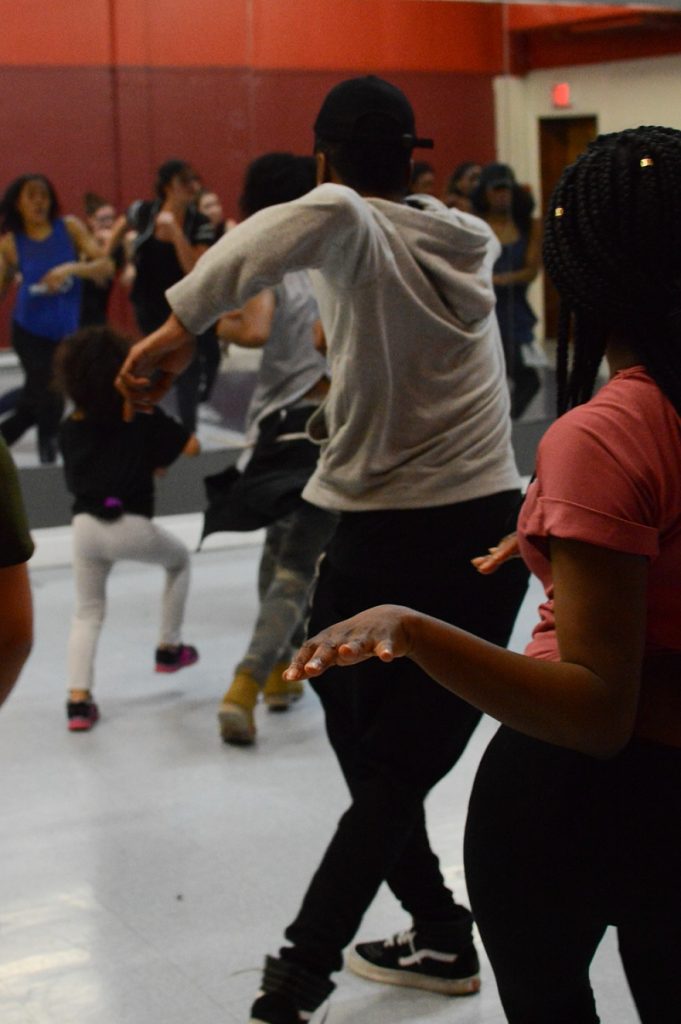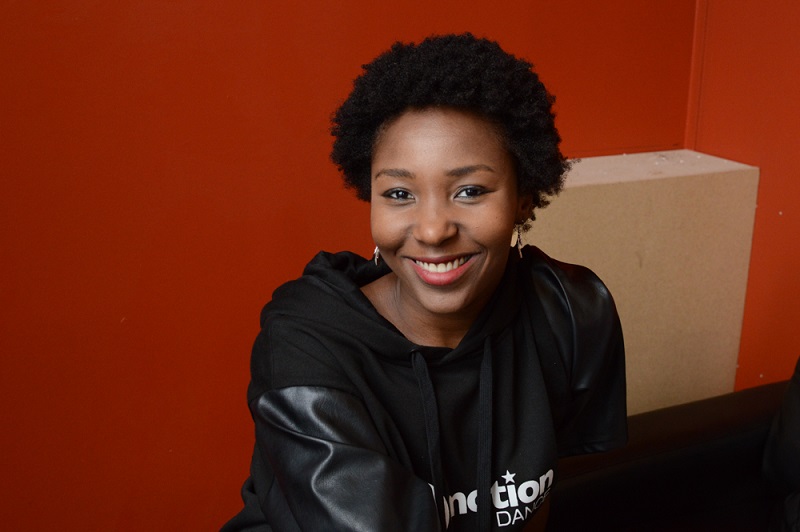How a physical activity turns into an artform
As dancers held both arms above their heads with hands balled up into fists, Veroushka Eugene yelled: “Now give me that attitude and drop it into a body wave!” to the dancehall class of 30 students. Eugene is one of the seven women who make up the dance crew Womanity currently competing on the show Danser pour Gagner.
“And one, two, three, four,” counted Jenna Abessolo, another member of Womanity, as the music started playing and all of the dancers repeated the choreography until it seemed they had memorized the steps.
Eugene is a dancer and a dance teacher in Montreal, with an expertise in dancehall and Afro-Haitian dances. Just like any other sport, dance takes its toll on the body. In Eugene’s case, joint weakness runs in the family, and dancing made it worse. Her left knee weakened to the point where doctors told her, in 2013, that she had to stop dancing altogether. Although she didn’t quit outright, she adjusted her approach by listening to the way her body feels during different movements and steps. Eugene’s warm-up turned into the most important part of her routine.
Born and raised in Haiti, Eugene started going to a dance school in her home country on Fridays and Saturdays at the age of three. “I haven’t stopped dancing since. I started learning classical dances like ballet and jazz with mandatory Haitian folklore classes,” she said.
While in school, kids loved to run around and play tag, but Eugene always kept to herself, her books and her dancing. Later on, she took salsa and tango lessons, and even explored the world of hip hop. Those who knew her in both school and the dance studio saw her switch from an introvert to an extrovert on the dance floor.

“I would go from being this introverted girl to a confident dancer,” she said. Although she associated school with stress and bullying, Eugene felt comfortable on the dance floor. “When I was told I was a good dancer, which I’m not sure I was at the time, it kept me going. It felt like I was valued.”
When she moved to Montreal at the age of 18, Eugene wanted to start competing in Latin dance competitions, but the classes were too expensive. So, she turned to a cheaper alternative: urban dance, more specifically dancehall. After a couple classes, and her own self-teaching, Eugene stepped into the movements and music of dancehall.
“It’s a feeling. It’s not really something you have to think through,” she explained. “Of course you have to know the movements, but the way in which you feel the movement and relay it makes it special.”
By incorporating body waves and steps called “so fresh so clean” into the routine, dancers add attitude and sassiness to their performance, which is why Eugene’s classes are always very loud. You can hear all the dancers add a “Ha” or an “Aye” to poignant moves at the workshop Eugene leads every Sunday at the Amotion Dance Studio in the Plateau-Mont-Royal.
Eugene described dancehall as “a freeing dance, without many rigid and strict movements like classical dances. It allows you to express yourself physically and emotionally.” She interprets the style as if it were a release mechanism—after all, it did help her through tough times in her younger years in Haiti.
While the movements in dancehall makes it more of an art than a sport, Eugene explained that dance demands the same strategic thinking and training athletes go through. She compared dancers to tennis players who train their bodies to run in a certain direction. By the time the big game comes, they already know how to hit the ball, so they’re just focused on winning.
“Dancers do the same. We train our muscle memory so that when we perform we can focus on how to excel in the steps we do,” she added.
Eugene began teaching dancehall and Afro-Haitian dance as a freelancer until Studio Danse Montreal and Amotion Dance Studio hired her in 2012. Her choreography process happens in one place: her head. Unlike other choreographers, Eugene doesn’t rehearse every step, pop and drop in front of a mirror. Instead, she listens to a song, and plays it over and over as she visualizes the steps, the flow and the speed of the movements to the beat.
“I honestly thought every dancer created their choreography in their heads until students and other dancers around me pointed it out as special. It’s like a super power,” Eugene said. Then again, she added that it’s still all about the feeling. She chooses songs by considering the feeling she wants to relay in the dance, whether it’s partying or a more emotional performance. “I think, with time, I became more aware and conscious of my body and my movements that now I can visualize it all in my head,” she added.
Eugene learns more when she is teaching than when she is performing. “A performance is only a moment in time. It’s beautiful and I enjoy it, but teaching is a more continuous process where both the students and I grow,” she said. It took her awhile to become comfortable demonstrating the moves to her students, but Eugene has learned that there is a difference between “showing people and just showing off.”
A little over a year ago, she would have said that she’s more of a teacher than a performer. Now, as she’s competing on a dance show, she has become more comfortable on stage.
“It helps to be alongside powerful women who encourage me in my solo parts of the performance,” Eugene said. As she went back to practice with Womanity for next week’s show, the dancefloor went back to jumping up and down, and the “Ha” and “Aye” sounds echoed in the studio again.
Photos by Mackenzie Lad.




